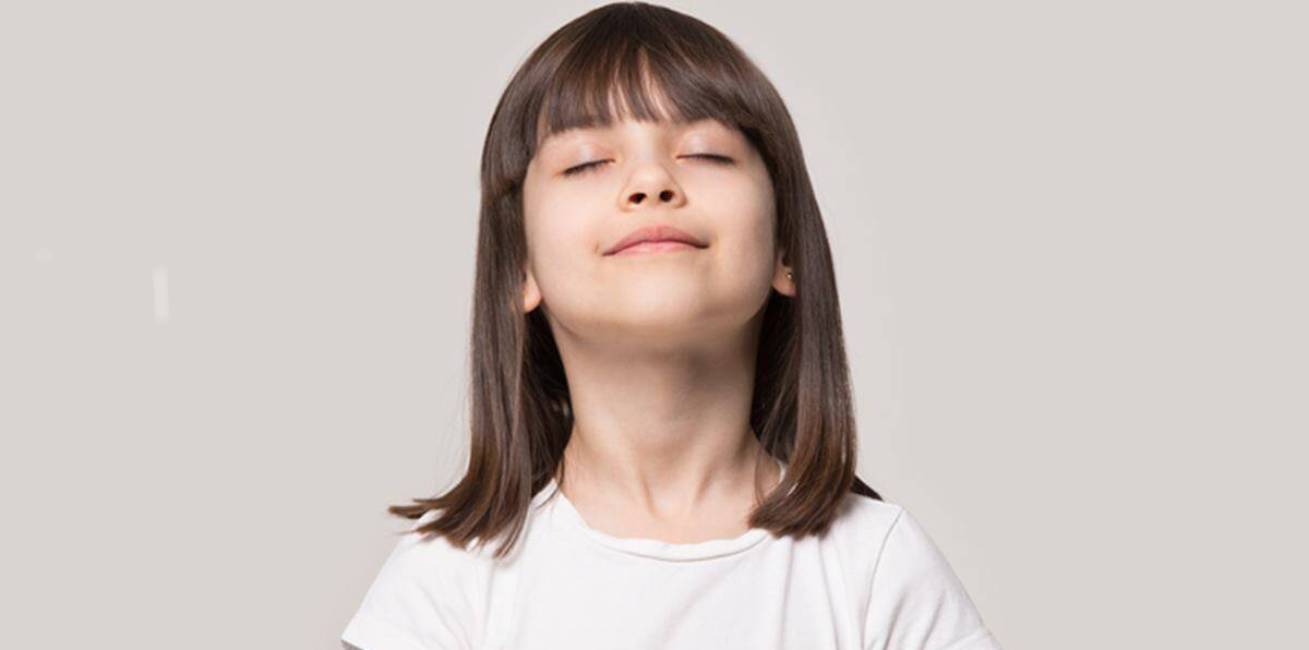Deep belly breathing is a great way to calm children and teens.
Breathing is a process we do automatically and rarely notice. Inhaling and exhaling have a profound effect on our moods and thoughts. It’s been a long-time relaxation technique for adults and children to use deep breathing.
Stephanie Richardson, LCSW, is the Social Work Team Lead in the Emergency Department at Children’s Health (sm). Children can use deep breathing throughout the day to help them, whether they feel overwhelmed or anxious, want to relax or sleep, calm their body after exercise, or just reset and pause when they have high energy.
Breathing exercises can help kids reduce anxiety and stress.
What breathing exercises can children and teenagers do to improve their health?
Children and teenagers can benefit from breathing exercises by:
- Relaxing the Body
- Refocus the mind
- Reduce stress and anxiety
- Lowering heart rate
- Increased oxygen levels in the body can be calming.
Deep, deliberate breathing can calm you physically and mentally. Deep breathing techniques can activate the parasympathetic system (the part that controls stress reactions) and redirect the mind away from anxious thoughts.
What types of breathing exercises are there for children?
Many different breathing exercises can help kids take deep breaths. Some breathing exercises that kids can do include bubble breathing, feather breathing, or counting breaths.
Diaphragmatic breathing, also known as belly breathing, is one of the easiest breathing techniques for children because it does not require any supplies and can be done anywhere and anytime. Richardson says children and teens can use belly breathing to calm themselves down without drawing attention. This is a great way to calm down at the moment. It can be used before or during tryouts, competitions, or when you feel nervous.
How do you teach your child to belly breathe?
Follow these steps to help your child learn and practice deep abdominal breathing:
- Ask your child how they feel and ask them to breathe normally.
- Place one hand on the child’s upper chest and the other on their belly (above their belly button).
- Tell your child to take a deep, slow breath through their nose. Fill their lungs up and down towards their belly.
- As they expand their stomach, you will notice that their bottom hand is rising.
- Tell your child to slowly exhale through their mouth and feel the bottom hand drop back down.
- You can encourage your child to exhale slowly by asking them to pretend to blow candles out, to hold their hand above their mouth and feel their breath, or to make noises with their exhale.
- Ask your child if they noticed any changes after taking several deep breaths.
Please encourage your child to breathe deeper by focusing on the hand on their chest. Shallow chest breaths are more often associated with anxiety.
It may be helpful to lie your child on his back while he is practicing belly breathing. You can use an object, such as a small book or stuffed animal, on the child’s belly to help them learn how to breathe.
Children’s belly breathing: Other tips
If your child is calm, you can practice.
When teaching belly breathing, it is important to teach your child when they are calm. When a child is calm, they are better equipped to use the tool when faced with stress or anxiety. Richardson suggests practicing before bedtime and says this can become a nighttime ritual to help your child sleep, whether or not they are anxious.
Start young
Deep breathing can benefit the children of all ages. Parents can teach their children to breathe more slowly when angry or upset. Children in elementary school will be better prepared to learn about belly breathing.
Use of counting
Encourage your child to practice belly breathing by counting to three while inhaling. Then, after a short pause, have them exhale to a count of four. Your child may be able to do longer counts depending on their age or breathing abilities. It is more important to slow their breathing down and focus their attention on the task than the length of their inhalation and exhalation.
Adapt your approach to what best suits your child.
Parents can observe what works best for each child when teaching and practicing breathing techniques. No one is forcing you to do deep breathing the exact way. Richardson encourages parents to do whatever makes their child most comfortable. The more comfortable your child is with a breathing technique, the more likely they will use it when needed.


